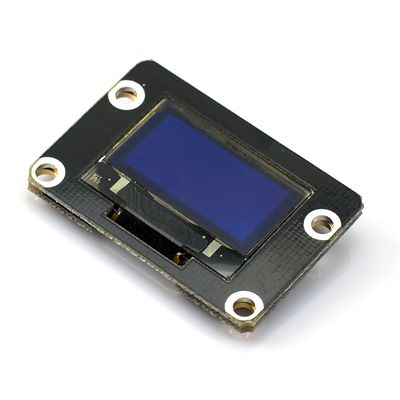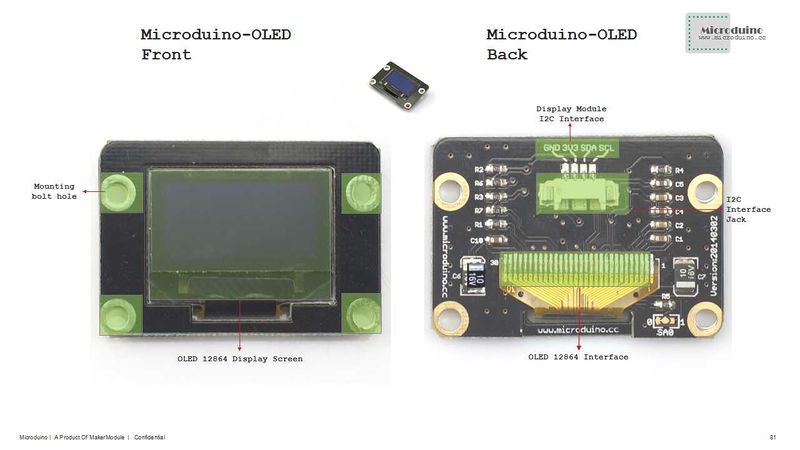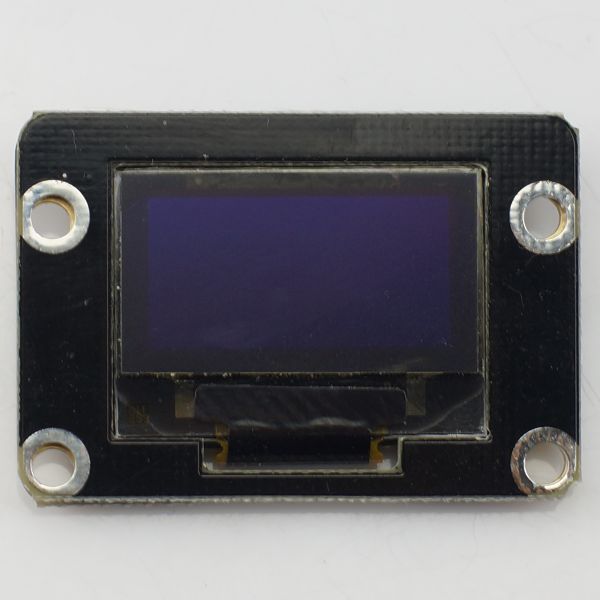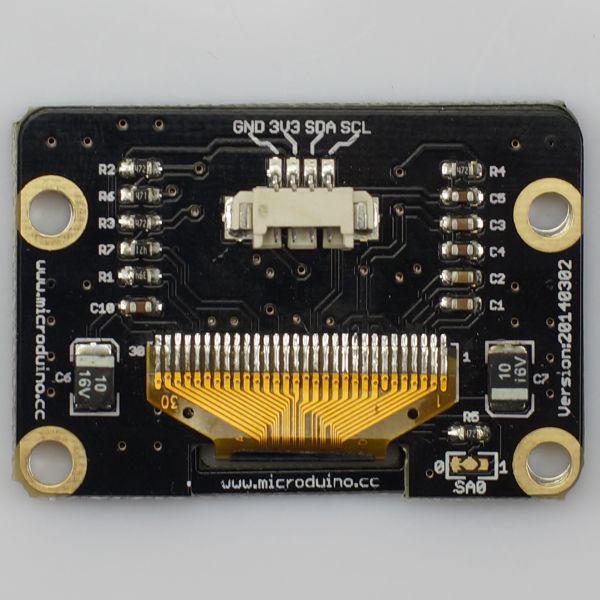Difference between revisions of "Microduino-Module OLED"
From Microduino Wiki
(→Specifications) |
|||
| Line 4: | Line 4: | ||
[[file:Microduino-OLED-rect.jpg|400px|thumb|right|Microduino-OLED]] | [[file:Microduino-OLED-rect.jpg|400px|thumb|right|Microduino-OLED]] | ||
| − | '''Microduino-Oled 12864''' is based SSD1306 0.96 inch 12864 OLED display module. Using the I2C interface, 3.3V power supply. | + | '''Microduino-Oled 12864''' is based on SSD1306 0.96 inch 12864 OLED display module. Using the I2C interface, 3.3V power supply. |
| Line 14: | Line 14: | ||
*Active light, no backlight, large-angle range; | *Active light, no backlight, large-angle range; | ||
*Low driving voltage, low power consumption; | *Low driving voltage, low power consumption; | ||
| − | *I2C | + | *I2C communication, saving IO interface, widely used; |
| − | *Small, cheap, | + | *Small, cheap, opened module; |
| − | *Open source hardware circuit design, compatible with the Arduino IDE development environment for programming | + | *Open source hardware circuit design, compatible with the Arduino IDE development environment for programming; |
| − | * | + | *Defines unified interface Microduino specification and contain rich peripheral modules. Set up the quick connection with other Microduino modules and sensors easily and flexibly. |
| + | ; | ||
| Line 27: | Line 28: | ||
*Resolution:128x64; | *Resolution:128x64; | ||
*Interface: IIC communication; | *Interface: IIC communication; | ||
| − | * | + | *Power:3.3V; |
[[File:OLED-Pinout-1.jpg|800px|thumb|center|Microduino-OLED-Pinout1]] | [[File:OLED-Pinout-1.jpg|800px|thumb|center|Microduino-OLED-Pinout1]] | ||
| Line 38: | Line 39: | ||
main components | main components | ||
| − | *12864Oled | + | *12864Oled Display screen:2864HSWEG01 [[File:2864HSWEG01.pdf]] |
*Driver IC:SSD1306 [[File:SSD1306-Revision 1.1.pdf]] | *Driver IC:SSD1306 [[File:SSD1306-Revision 1.1.pdf]] | ||
| Line 54: | Line 55: | ||
==Applications== | ==Applications== | ||
| − | basic usage | + | The basic usage of u8glib library's sample program |
Note:core's IIC interface is A4(SDA),A5(SCL),core+'s IIC interface is D20(SDA),D21(SCL) | Note:core's IIC interface is A4(SDA),A5(SCL),core+'s IIC interface is D20(SDA),D21(SCL) | ||
| − | *put your downloaded library | + | *put your downloaded library into library fold within the Arduino IDE's installation folder. If opened Arduino IDE, please close all other example program before you open example program within u8glib library; |
| − | *Open the HelloWorld sample program, | + | *Open the HelloWorld sample program, remove comments for this line: U8GLIB_SSD1306_128X64 u8g (U8G_I2C_OPT_NONE) (remove "/ /"), then the compiler it,downloaded it directly. After download, you can see the "Hello World!" displayed on the screen; |
*Display character / variables: | *Display character / variables: | ||
| − | *Use u8g.print (xx) function | + | **Use u8g.print (xx) function, just like use Serial.print (xx). |
*Change the font: | *Change the font: | ||
| − | *Use u8g.setFont (xx) function to change the font, parentheses "xx" can be replaced by the corresponding font library name (you can search font library in u8g.h within U8glib \ utility folder); | + | **Use u8g.setFont (xx) function to change the font, parentheses "xx" can be replaced by the corresponding font library name (you can search font library in u8g.h within U8glib \ utility folder); |
| − | *Recommended large font: u8g_font_7x13, recommended font: u8g_font_fixed_v0r, recommended small fonts: u8g_font_chikitar; | + | **Recommended large font: u8g_font_7x13, recommended middle font: u8g_font_fixed_v0r, recommended small fonts: u8g_font_chikitar; |
*Change coordinates: | *Change coordinates: | ||
| − | *Use u8g.setPrintPos (x, y) function, if you want to change the display coordinates | + | **Use u8g.setPrintPos (x, y) function, if you want to change the display coordinates |
*Screen Rotation: | *Screen Rotation: | ||
| − | * | + | **Post u8g.setRot180() in void setup() function, the screen will flip 180 degrees, you also can change 180 to 90,270; |
|- | |- | ||
Revision as of 08:10, 24 January 2014
|
Microduino-Oled 12864 is based on SSD1306 0.96 inch 12864 OLED display module. Using the I2C interface, 3.3V power supply.
|
ContentsFeatures
|
Specifications
|
DocumentsEagle PCB File:Microduino-Oled.zip main components
|
Development
|
ApplicationsThe basic usage of u8glib library's sample program Note:core's IIC interface is A4(SDA),A5(SCL),core+'s IIC interface is D20(SDA),D21(SCL)
|
Buy |
History
|
Pictures
|



